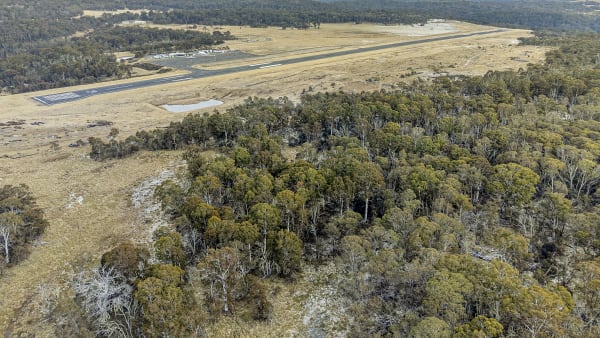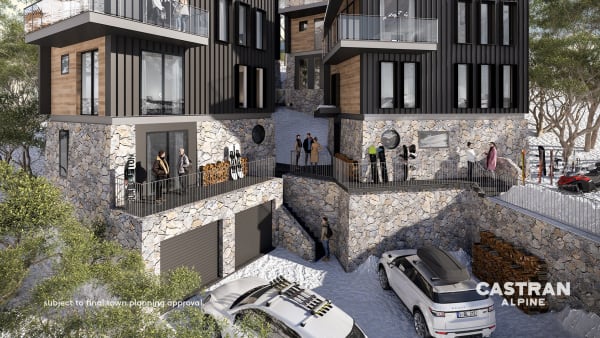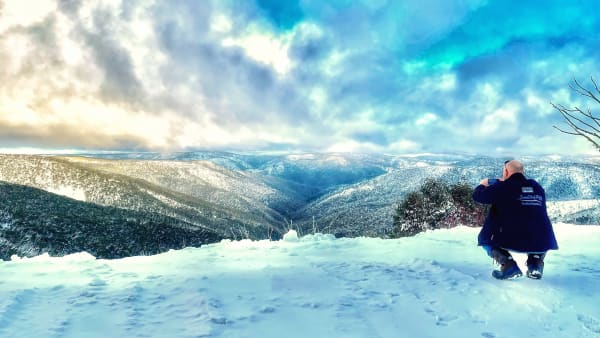MEET Geoff, he lives in a lodge at Mt Hotham and is officially known as a Small Native Mammal in Residence (SNMiR ....... because who doesn't love an acronym!).
You may have seen Geoff yourself.
It goes something like this ..... It is late afternoon. A small furry critter appears on the floor in the lodge. It moves quickly along the edges of the lounge room, does a circuit under the dining room tables (even going between diners' feet), cuts a lap of the kitchen floor, examines the underside of the fridges, then heads out into a hallway and disappears.
There are a few things to understand about Geoff and his fellow SNMiRs.
The first point, and possibly the most important to know, is that the vast majority of small mammals appearing in buildings at both Mt Hotham and Falls Creek are native, and as such are protected by the law.
In Victoria the Wildlife Act 1975 protects all native animals from harm, with stiff penalties to anyone who breaches it.
Geoff and his fellow SNMiRs are protected wildlife!
So why Geoff?
In one lodge, the SNMiR had been relocated outside the lodge, but returned home within a very short time – a few minutes to be precise!
The human winter residents decided to normalise the presence of the SNMiR at evening mealtimes by giving it a name.
For some obscure reason, the younger inhabitants unanimously decided to call it Geoffrey (or Geoff to his friends).
Geoff was swiftly identified as a Southern Bush Rat (Rattus fuscipes).
Cute as a button and very cheeky when darting between feet, Geoff had a few doubters – rats do get a bad rap after all.
But in a very short time, he was an accepted part of the lodge, causing little fuss during its short, daily forays.
There are several types of SNMiR in alpine areas like Mt Hotham.
The Tooarrana (or Broad–toothed Rat) (Mastacomys fuscus) is a potential, but highly infrequent, lodge visitor.
Some say they are the cutest of all the small native beasts.
One often present in lodges during winter are the small marsupial carnivores, Dusky Antechinus (Antechinus swainsonii) and Agile Antechinus (Antechinus agilis), are not shy of interacting with residents, often popping in for a reconnaissance mission and chewing on the odd telephone charger!
Lodge humans may also very occasionally sight the most special of alpine area inhabitants, the endangered Mountain Pygmy–possum (Burramys parvus).
Thought extinct and usually resident in the extensive boulder fields around Hotham and Higginbotham, it was rediscovered in the University Ski Club ay Mt Hotham in 1966.
Any Mountain Pygmy–possums residing in lodges at Mt Hotham during winter are likely to be females, as the males tend to stay lower down the mountain during non–breeding periods.
The most common and active alpine lodge resident is the humble Southern Bush Rat (Rattus fuscipes) i.e. Geoff and his relatives.
Not to be mistaken for the larger, pest species, the Black Rat (Rattus rattus), Bush Rats are smaller, rounder, softer looking mammals, with visibly shorter tails than their introduced relatives.
Generally nocturnal, they also make appearances during the day, particularly late afternoon.
As they are not good at climbing, Bush Rats like Geoff will generally stay low to the ground or floor.
Shy but sometimes cheeky, they can be quite comfortable around humans, but prefer to stay close to cover.
Unlike introduced rodents, Bush Rats leave very few signs of their passing.
The main pest rodent species in lodges is the not so humble, introduced House Mouse (Mus musculus).
Loads of small droppings and a strong odour will alert lodge humans to their presence, though recently their numbers have been very low and most lodges are mouse free this winter.
Bev Lawrence, environment officer with the Mt Hotham Resort Management Board, says, "One of the most important things to remember when seeing one of our small native mammals visiting your lodge is that they are friendly and no threat to you. It is a treat to see them up close, they are the funniest little creatures. If you don't want them in your space please don't use snap traps or rat sack. It is illegal to kill native wildlife and using 'rat sack' is actually a danger to any small child crawling around on the floor. Small mammals can move 'rat sack' around stashing it in those nooks that small fingers can reach. Far better to try to exclude entry points. Have a good look for any small openings, can you fit a finger in that hole? Block it with steel wool as foam and other sealants will just get chewed. Look in cupboards, holes around plumbing pipes etc."
The simple steps to minimise any issues with your lodge SNMiR include:
• Ensure food areas are kept clean and free of food scraps or crumbs, including behind fridges, in cupboards & beneath dishwashers, plus ensure food is stored in sealed containers;
• Block any entrances, holes or gaps through which animals can access living areas;
• Do not use snap traps or poison baits; and
• Learn to live with them – they are difficult to remove and protected by law.
Bev is happy to visit any lodge to advise on possible solutions when managing visitors like Geoff – contact her via email on environmental@mthotham.com.au.
So if you have a small native mammal in residence at your lodge, simply enjoy and appreciate them.
Their presence signifies a healthy alpine environment and functioning ecosystem.
Three photos/images
2 of Geoff, 1 excerpt from Brochure,









